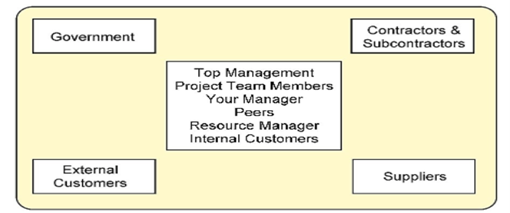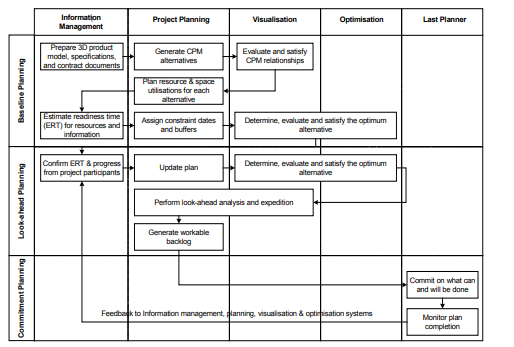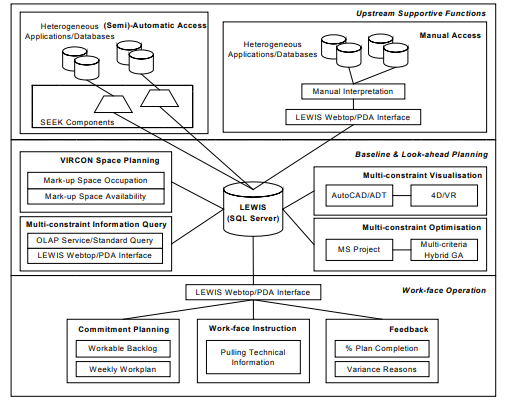Advanced Project Planning & Visualisation Assignment
PART 1: Attributes as well as qualities of project managers with target on the planning of project and the domain of project organisation
In the present business environment, the field of project management is getting increasingly important to the industries gaining a greater level of both uses as well as interest. However, with time effective project management is also getting increasingly challenging due to the highly dynamic and complex environment within which the projects need to be delivered (Cha et al., 2018). In such a scenario, the effectiveness of the project manager is critical to the success of the project. From the perspective of a project manager, crucial qualities and attributes of project managers are discussed below:
1. Communications
One of the most core and crucial qualities a project manager must have is effective communication skills so that he/she can connect with people at multiple levels associated with the project. In the present business scenario, remote working has become quite common, and the project managers have to upgrade their communication skills as per the remote working requirements
According to San et al (2018), “project managers need to go an extra mile when it comes to coordinating with remote working project team”. In order to effectively communicate with a remote working team, the project managers have to be tech-savvy enough to carry out the meetings on project planning and project organisation domain through video conferences through various tools, including zoom meetings, Skype and so on. Besides that, proficiency in digital communication tools is also crucial for the project manager to stay connected with the project team and also track the progress as per the project planning and scheduling.
2. Managing multi-level project stakeholders
As per Hidalgo (2019), a project is successful only if it is able to achieve all its goals and meet the expectations of the stakeholders. Stakeholder engagement is a complex and crucial task for the project manager as a project is associated with stakeholders from multiple dimensions, all of them with different expectations and interests in the project.

Figure 1: A general view of project stakeholders
(Source: Hidalgo, 2019)
A project is associated with both external as well as internal stakeholders. With the internal stakeholders, employees or project team, the manager has to ensure that they perform the complex set of tasks directing the project through its lifecycle. Problems or issues managing with any team members can derail the project.
Besides that, there is also a number of external stakeholder’s integral to the project, such as suppliers and investors. For instance, a manager has to questionable to the investors if the project gets delayed due to the delay in delivering raw material from the supplier side (Müller et al., 2019). So, managing multi-level stakeholders requires the ability of the managers to manage different levels of stakeholders effectively.
3. Advance planning and scheduling to deal with pressure from stakeholders:
Advance planning and scheduling are one of the most basic parts of delivering a successful project, and a project manager must have the capability to deliver an advanced level of planning through effective scheduling using Advance Planning and Scheduling (APS) Software. But within the complex environment of project management, especially in the case of multi-site projects overlapping the cost and site is a common issue, and under the circumstances, the project managers are the responsible ones for answering the related stakeholders like investors, higher authority and so on (Armenia et al., 2019).
The project manager has no control in the cases of exceeding cost and time due to external environmental reasons such as the increased price of raw materials, supplier issues and so on. In order to deal with such a scenario, the project managers should have a quality strategic vision and consider the technique of risk assessment and a contingency plan if the project faces similar issues.
PART 2: Multi-constraints planning application in the industrial sector
The process of planning in concurrent and complex construction projects is quite complex and dynamic under the excessive pressure complete the project within the stipulated time period within the budget and without sacrificing the quality. The reliability aspect of construction planning and scheduling can be improved by identifying and satisfying the all the potential constraints before the on-site execution related to the availability of resources, physical dependency of the project, execution space, client instruction, execution logic and so on (Dawood and Sriprasert, 2006).
In the absence of reliable as well as effective planning, there exists a robust propensity for weak partnership between downstream operations as well as upstream supply chains. From this context of effective planning, the method of multi-layer constraint planning and scheduling arises.
Under the methodological approach of multi-constraints planning, a Genetic Algorithm is being developed and utilised for multi-constraints optimisation problems under several restraints such as activity dependency, limited working area, information readiness and so on (Hu et al., 2016). The application of multi-constraints planning in the construction industry should be based on the following aspects.
Collaborative and multi-level planning: in order to deliver a successful project, planning must be done through a collaborative effort right from the upstream supportive participants to the core planners of the project to the downstream operators at work dealing with the whole phase of construction (Ruiz-Meza et al, 2021).
Multi-constraints consideration: the planning must be appropriately evaluated and communicate all the potential constraints associated with the contract, physical resources and information before releasing the tasks to the workforce. Some of the potential constraints that arise in delivering the construction projects are as follows:
- Partially accessible information regarding the raw material market, legal obligations, availability of space and resources and so on
- Conflicts with the suppliers due to unprofessional behaviour (Zhang et al, 2020)
- Uncertainty in the business environment
- Accidental events
- Overlapping the budget
Proper consideration of all such constraints in the project planning makes it capable of dealing with multiple situations which can arise in delivering the project.
Efficient handling of uncertainty: the method requires the proactive identification of all identified delays and a supporting plan to absorb them by entering appropriate buffer within the project schedule Chen et al, 2020). The different types of buffers a project can consider are as follows:
- Project buffer
- Resource buffer
- Feeding buffer
Moreover, the methodological approach is further needed to minimise the inconsistency by protecting jobs from potential constraints and creating a practical backlog.
Appropriate and effective visual representations: all the output of the project plan needed to be effectively assessed and efficiently conversed all the participants of project deploying the advanced techniques of visualisation. Through it is also crucial to use the simple bar chart and worksheet at the crew level so that they can effectively understand the planning and instructions in a simple manner (Cong et al., 2021). In simple terms, all the participants of the project in the upper level (project team) should have a proper visualisation of the project with clear goals and objectives and deliverables of the project.
Practicable Optimisation: in order to make the project effective with the present industry standards, it is crucial to combine simple features of the heuristic tactics along with evolutionary search power of the Generic Algorithms within the present project management software such as Fieldwire, Procore, Bluebeam, CoConstruct and so on (Horng et al., 2020).
.

Figure 2: the process of multi-constraints planning technique
(Source: Sriprasert and Dawood, 2013)
As per, A Decision Support System (DSS) is crucial when it comes to the application of multi-constraints planning. A DSS is comprised of both intelligence computer-based systems along with information management, and it is used for assisting the project team in the concurrent process of decision making. According to Hui et al (2021), to support the multi-constraints planning, a DSS should have the feature of integrating both vertical as well as horizontal lines of sublimes.

Figure 3: General DSS architecture for multi-constraints planning
(Source: Sriprasert and Dawood, 2013)
The Multi-constraints Information Management system is another crucial aspect of multi-constraints planning. The project planning should consider a cost-effective and modern web-based way of communication, which integrates all the project participants (Sriprasert and Dawood, 2013).
In order to improve the idea of the application of the web-based systems, the prototype “LEWIS (Lean Enterprise Web-based Information System for Construction)” is being incorporated into the project planning of the construction projects. Initially, the system was planned as an instrument for promoting production based culture along with linking the gap between planning, management and execution (Hang et al, 2020).
In simple terms it is a simple LEWIS is web-based information respiratory which enables the users to analyse and monitor the multiple construction constraints imposed from the level of upstream supportive organisations, project teams, suppliers and work for face personnel.
Under the multi-constraint planning, effective visualisation of the constraints plays a huge role. One of the most basic constraints which need to be visualised for the effective delivery of the project enables constraints which can be described as the contract, information and resource readiness problem. The contracts associated with contracts represent imposed budgets and milestones, specific requirements from the client’s side and so on.
Information readiness is one of the most common issues when it comes to delivering a successful product within the stipulated budget and time (Blondin, 2021). Besides that, the contact constraints also play a huge role in delaying the project delivery interrupting the flow of the project activities. All such aspects can be ensured to a significant extent with the practical application of the multi-construction planning integration with the Decision Support System (DSS) and Multi-constraints Information Management system.
Bibliography
Armenia, S., Dangelico, R.M., Nonino, F. and Pompei, A., (2019). Sustainable project management: A conceptualization-oriented review and a framework proposal for future studies. Sustainability, 11(9), p.2664. https://www.mdpi.com/2227-7102/9/1/44/pdf
Blondin, M.J., (2021). Controller Tuning Optimization Methods for Multi-Constraints and Nonlinear Systems: A Metaheuristic Approach. Springer International Publishing. https://www.sciencedirect.com/science/article/pii/S221491472200006X
Cha, J., Newman, M. and Winch, G., (2018). Revisiting the project management knowledge framework: Rebalancing the framework to include transformation projects. International Journal of Managing Projects in Business. https://westminsterresearch.westminster.ac.uk/download/9b26e6b6a7d62f7471b4c412ab94af2e060d67a953ca17f40427b77682990614/1526940/IJMPB-11-2017-0147.R1_Proof_hi.pdf
Chen, W., Sun, J., Li, W. and Zhao, D., (2020). A real-time multi-constraints obstacle avoidance method based on LiDAR. ArXiv, abs/2006.00142. https://www.researchgate.net/profile/Sun-Jian-4/publication/341817233_A_real-time_multi-constraints_obstacle_avoidance_method_based_on_LiDAR/links/5ef9ef3845851550507b277b/A-real-time-multi-constraints-obstacle-avoidance-method-based-on-LiDAR.pdf
Cong, M., Cheng, X., Zhao, Z. and Li, Z., (2021). Studies on Multi-Constraints Cooperative Guidance Method Based on Distributed MPC for Multi-Missiles. Applied Sciences, 11(22), p.10857. https://www.mdpi.com/2076-3417/11/22/10857/pdf
Dawood, N. and Sriprasert, E., (2006). Construction scheduling using multi‐constraint and genetic algorithms approach. Construction Management and Economics, 24(1), pp.19-30. https://www.tandfonline.com/doi/abs/10.1080/01446190500310486
Hang, P., Lv, C., Huang, C., Cai, J., Hu, Z. and Xing, Y., (2020). An integrated framework of decision making and motion planning for autonomous vehicles considering social behaviors. IEEE transactions on vehicular technology, 69(12), pp.14458-14469. https://arxiv.org/pdf/2005.11059
Hidalgo, E.S., (2019). Adapting the scrum framework for agile project management in science: case study of a distributed research initiative. Heliyon, 5(3), p.e01447. https://discovery.ucl.ac.uk/id/eprint/10047729/1/RP%203rd%20Revision%20MANUSCRIPT%20FINAL%20CLEAN%20WITH.pdf
Horng, M.F., Kung, H.Y., Chen, C.H. and Hwang, F.J., (2020). Deep learning applications with practical measured results in electronics industries. Electronics, 9(3), p.501. https://www.mdpi.com/2079-9292/9/3/501/pdf
Hu, Z.Z., Zhang, J.P., Yu, F.Q., Tian, P.L. and Xiang, X.S., (2016). Construction and facility management of large MEP projects using a multi-Scale building information model. Advances in Engineering Software, 100, pp.215-230. https://drive.google.com/file/d/1rOKCv65dH2MnC8PXXN94zWOLdxKFuPUH/view
Müller, R., Drouin, N. and Sankaran, S., (2019). Modeling organizational project management. Project Management Journal, 50(4), pp.499-513. https://biopen.bi.no/bi-xmlui/bitstream/handle/11250/2633658/Muller_Modelling_AM.pdf?sequence=1
Ruiz-Meza, J., Brito, J. and Montoya-Torres, J.R., (2021). A GRASP to solve the multi-constraints multi-modal team orienteering problem with time windows for groups with heterogeneous preferences. Computers & Industrial Engineering, 162, p.107776. https://www.researchgate.net/profile/Jose-Ruiz-Meza/publication/355800675_A_GRASP_to_solve_the_multi-constraints_multi-modal_team_orienteering_problem_with_time_windows_for_groups_with_heterogeneous_preferences/links/6189826e07be5f31b759128f/A-GRASP-to-solve-the-multi-constraints-multi-modal-team-orienteering-problem-with-time-windows-for-groups-with-heterogeneous-preferences.pdf
San Cristóbal, J.R., Carral, L., Diaz, E., Fraguela, J.A. and Iglesias, G., (2018). Complexity and project management: A general overview. Complexity, 2018. https://www.hindawi.com/journals/complexity/2018/4891286/
Shi, S., Zhang, T., Li, X., Mou, K., Shi, W., Cao, Y., Li, Z. and Duan, H., (2022), March. Research on Intelligent Planning and Scheduling Method Based on Manufacturing Big Data. In 2022 7th International Conference on Big Data Analytics (ICBDA) (pp. 54-57). IEEE. https://biopen.bi.no/bi-xmlui/bitstream/handle/11250/2633658/Muller_Modelling_AM.pdf?sequence=1
Sriprasert, E. and Dawood, N., (2013). Multi-constraint information management and visualisation for collaborative planning and control in construction. Journal of Information Technology in Construction, 8, pp.341-366. https://research.tees.ac.uk/ws/files/6385358/98136.pdf
Sun, L., Yu, Y., Li, C., Cloete, D.S. and Bai, S., (2020). Research on Decision Support Method for Charge Batch Planning of Steelmaking-Continuous Casting under Lagrangian Framework. IFAC-PapersOnLine, 53(2), pp.11138-11143. http://ifatwww.et.uni-magdeburg.de/ifac2020/media/pdfs/2492.pdf
Xia, N., Zou, P.X., Griffin, M.A., Wang, X. and Zhong, R., (2018). Towards integrating construction risk management and stakeholder management: A systematic literature review and future research agendas. International Journal of Project Management, 36(5), pp.701-715. http://qrjournal.com/articles/b8d016655df1ad457995d800c49040a2.pdf
Zhang, Q., Ding, X., Zhou, J. and Nie, Y., (2020). Research on aircraft route planning optimization problem with multi-constraints and dual-targets. Journal of Mathematics in Industry, 10(1), pp
Know more about UniqueSubmission’s other writing services:

